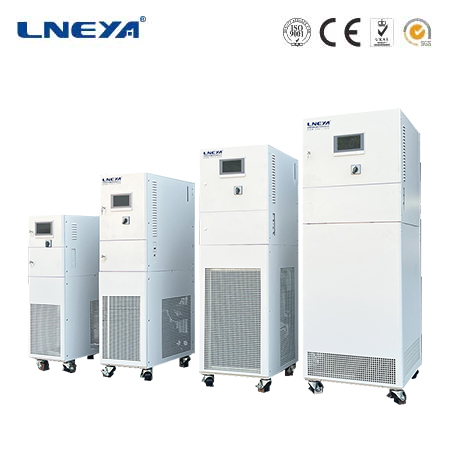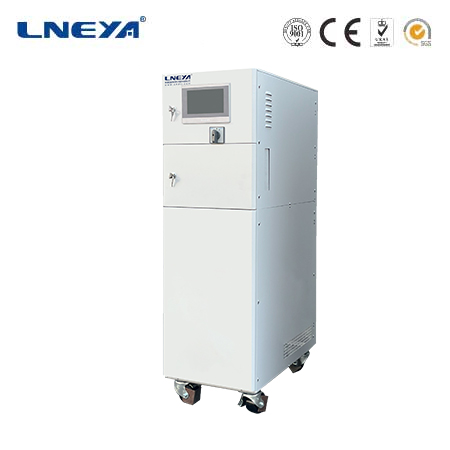industrial chiller machine
Industrial Chiller Machine
Industrial chiller machines are indispensable pieces of equipment in numerous industrial sectors. They are designed to remove heat from various industrial processes, fluids, or equipment, ensuring that operations can continue smoothly within the desired temperature range.

Components and Working Principle
An industrial chiller machine typically consists of several key components, each playing a vital role in the cooling process. The compressor is often regarded as the heart of the chiller. It compresses the refrigerant gas, increasing its pressure and temperature. This high-pressure, high-temperature refrigerant gas then moves to the condenser. In the condenser, the refrigerant releases heat to the surrounding environment or a cooling medium (such as air or water), and as a result, it condenses into a liquid. The type of condenser can vary, with air-cooled condensers using fans to blow air over the condenser coils for heat dissipation, and water-cooled condensers transferring heat to a water source.
After leaving the condenser, the liquid refrigerant passes through an expansion valve. The expansion valve reduces the pressure of the refrigerant, causing it to rapidly expand and cool down. This low-pressure, low-temperature liquid refrigerant then enters the evaporator. In the evaporator, the refrigerant absorbs heat from the fluid or equipment that needs to be cooled. As it absorbs heat, the refrigerant changes back into a gas, and this cooled fluid or equipment can then be used in the industrial process. The refrigerant gas then returns to the compressor to start the cycle anew.
Types of Industrial Chillers

Air-Cooled Industrial Chillers: These are relatively easy to install as they do not require a complex water supply and drainage system. They are suitable for industrial applications where access to a water source is limited or where a simpler installation is preferred. Air-cooled chillers use ambient air to cool the condenser. However, their performance can be affected by high ambient temperatures, as it becomes more difficult to dissipate heat in such conditions. They are commonly used in smaller industrial facilities or in areas where noise levels are not a major concern, as the fans used for air circulation can generate some noise.
Water-Cooled Industrial Chillers: Water-cooled chillers are often more efficient than air-cooled ones, especially in large industrial settings. They use water as the cooling medium for the condenser, which can be sourced from a cooling tower or a natural water source (such as a well or a river). These chillers are capable of handling higher cooling loads and are less affected by ambient temperature fluctuations. However, they require a more complex installation, including a water treatment system to prevent scaling and corrosion in the water circuits, and a cooling tower in most cases.
Selection Criteria for Industrial Chiller Machines
Cooling Capacity: Determining the required cooling capacity is crucial. This depends on factors such as the heat load generated by the industrial process, the desired temperature of the cooled fluid or equipment, and the flow rate of the fluid. It is essential to select a chiller with a capacity that can adequately handle the cooling requirements to ensure efficient operation.

Energy Efficiency: With increasing concerns about energy consumption and costs, energy efficiency is an important consideration. Look for chillers with high coefficients of performance (COP). Modern industrial chillers often come with features like variable speed drives for compressors and fans, which can adjust the operation based on the load and reduce energy consumption when the cooling demand is lower.
Maintenance Requirements: Industrial chiller machines need regular maintenance to ensure their optimal performance. Consider the ease of access to components for maintenance, the availability of spare parts, and the complexity of the maintenance procedures. Some chillers may require more frequent maintenance, such as checking refrigerant levels, cleaning condensers, and servicing compressors. Choosing a chiller with reasonable maintenance requirements can help reduce long-term operating costs.
Operating Environment: The environment in which the chiller will operate also plays a role in the selection. For example, in dusty or dirty environments, air-cooled chillers may require more frequent cleaning of the condenser coils. In areas with high humidity, corrosion prevention measures may be more important for water-cooled chillers.
Impact on Industrial Productivity and the Environment
Industrial chiller machines have a significant impact on industrial productivity. By maintaining the appropriate temperature, they help prevent equipment overheating, which can lead to breakdowns and production delays. They also ensure that industrial processes can operate within the optimal temperature range, which is crucial for product quality in many industries, such as food processing, pharmaceuticals, and electronics manufacturing.
From an environmental perspective, the energy consumption of industrial chiller machines contributes to greenhouse gas emissions. Therefore, choosing energy-efficient chillers and implementing proper maintenance and operation practices can help reduce the environmental impact. Additionally, the choice of refrigerant is important. Some refrigerants have a high global warming potential, and using refrigerants with lower GWP can contribute to environmental sustainability.
In conclusion, industrial chiller machines are essential for a wide range of industrial applications. Understanding their components, types, selection criteria, and their impact on productivity and the environment is crucial for industrial operators to make informed decisions when choosing and operating these machines. By selecting the right industrial chiller machine and maintaining it properly, industries can ensure efficient production processes while also being mindful of energy consumption and environmental concerns.
Related recommendations
4 ton air cooled chiller
2034 Ton Air-Cooled Chiller: Specifications and Applications In industrial and commercial settings, the demand for reliable and efficient cooling systems is paramount. A 4-ton air-cooled chiller i...
View detailsair cooled chillers australia
210Air-Cooled Chillers in Australia: An Overview Introduction to Air-Cooled Chillers Air-cooled chillers are essential components of HVAC systems, particularly in Australia, where they are ...
View detailswater cooled liquid chiller
149Water Cooled Liquid Chiller: High Efficiency Cooling for Diverse Applications Water cooled liquid chillers are critical components in various industrial and commercial settings, providing preci...
View detailsWhat details should be paid attention to in the daily maintenance and upkeep of industrial air cooled chiller?
747What details should be paid attention to in the daily maintenance and upkeep of industrial air cooled chiller? 1. When starting an air-cooled industrial chiller unit, it should be check...
View details
 LNEYA Thermal Test Chillers
LNEYA Thermal Test Chillers






HelloPlease log in